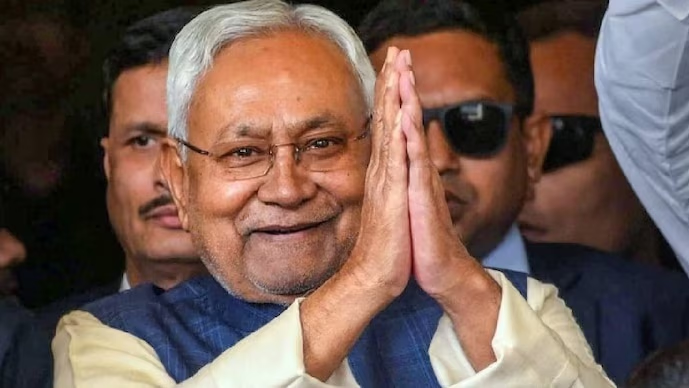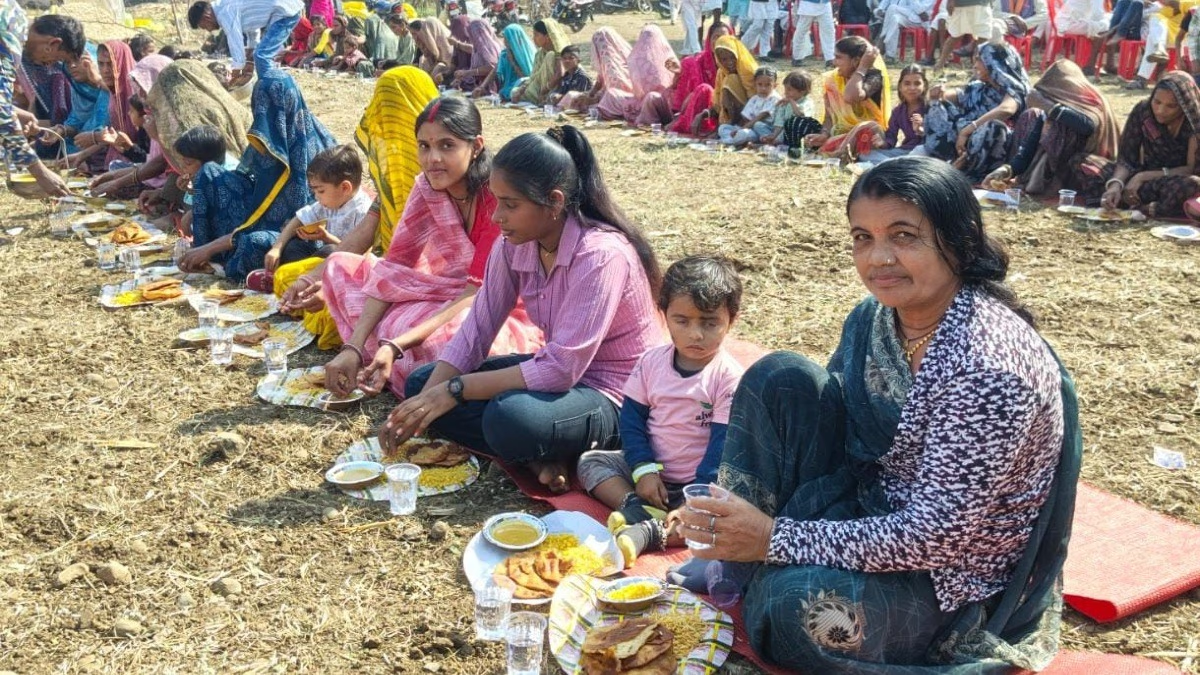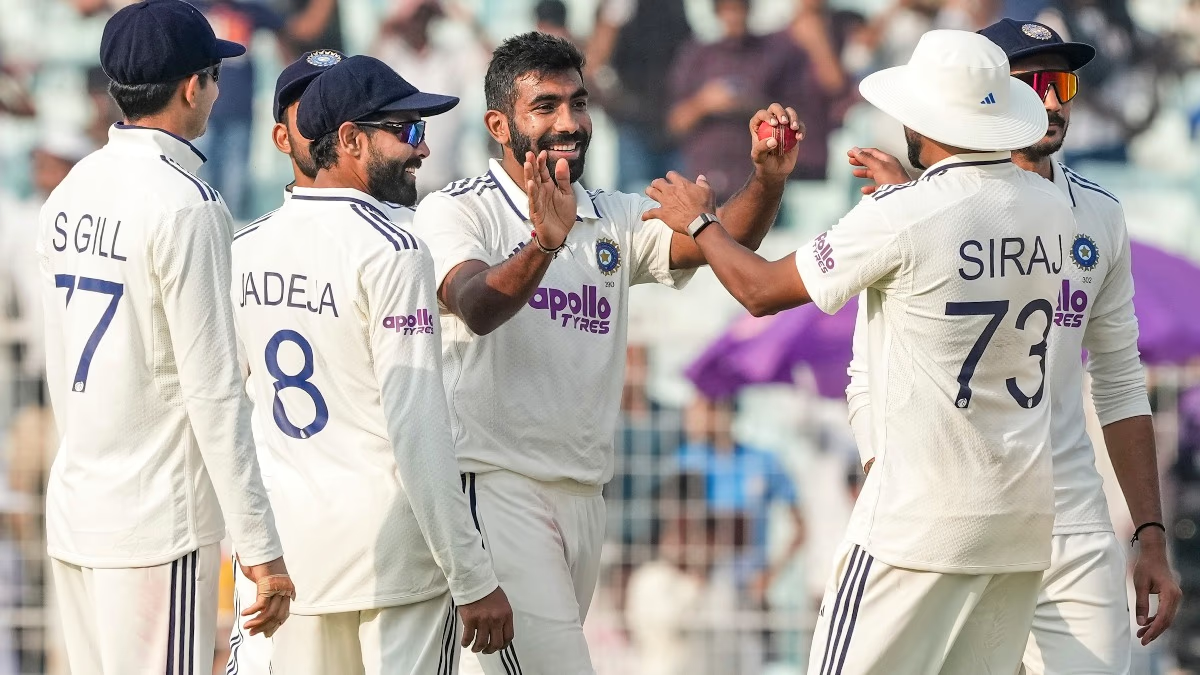If there is one story in Bihar's politics that is most intriguing, complex, and unpredictable, it is that of Nitish Kumar. A leader who has journeyed from being an activist to becoming a popular Chief Minister. Central politics shifted at times, and Bihar's face transformed, with changes in ideologies, alliances, friends, and foes, but one element remained constant — the impact of Nitish Kumar.
This victory in Bihar is not merely an electoral outcome but a tsunami in the state's political landscape. Once again, Nitish Kumar has proven that he is not just a leader but a game-changer in the entire political spectrum. In what was touted as a closely fought contest, he created a wave that swept his rivals off their feet. This victory demonstrates that when experience, strategy, and trust converge in a leader, the results make history.
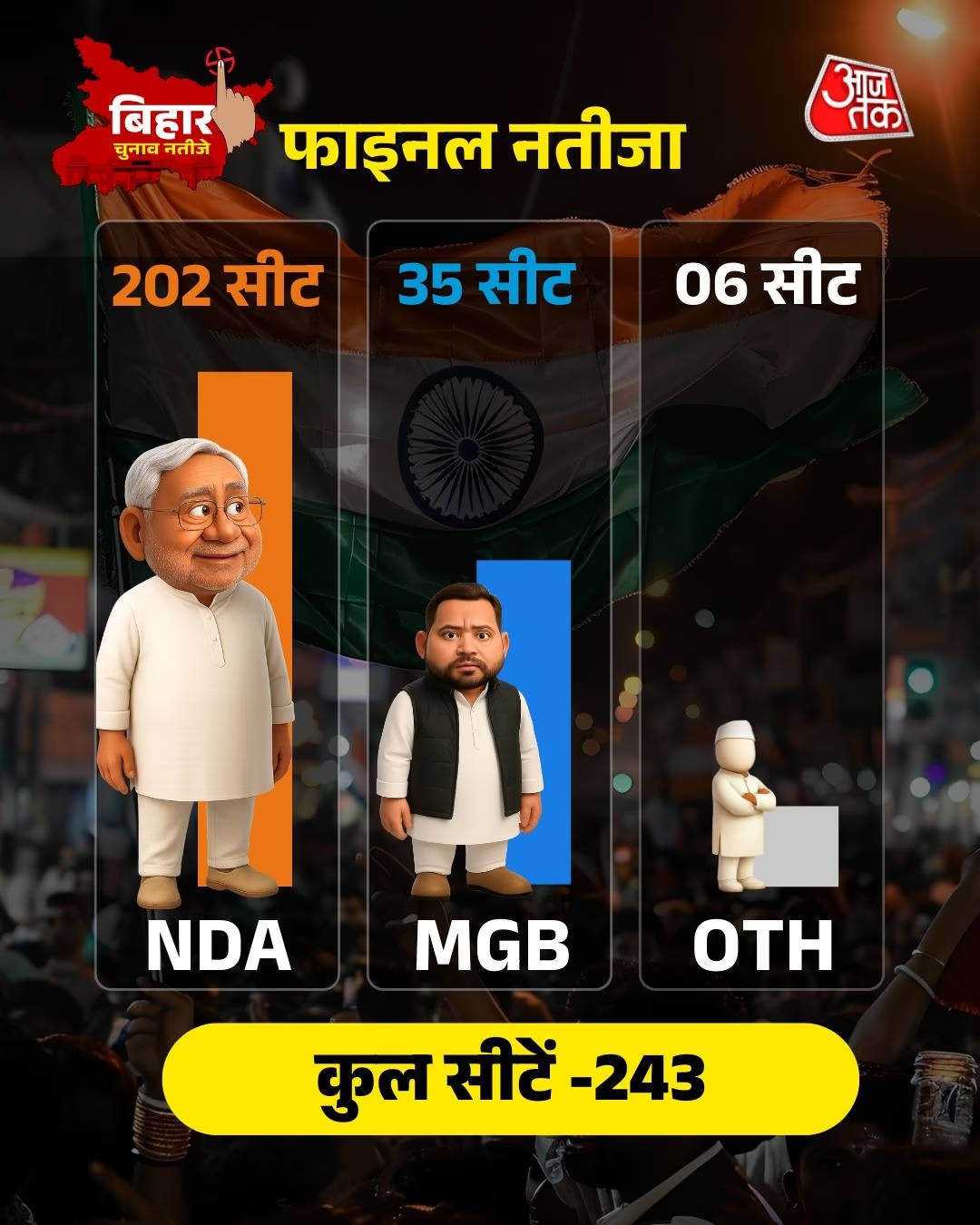
Source: aajtak
In October 2005, JDU secured 88 seats. In 2010, they worked their magic, obtaining 115 seats. When they garnered 71 seats in 2015, critics said Nitish Kumar's magic was waning. By 2020, with just 43 seats, political pundits claimed his political journey was nearing an end. Yet in 2025, by claiming 85 seats, Nitish showed his dominance was undeterred. As he embarks on his 10th Chief Ministerial oath, a record none have yet surpassed.
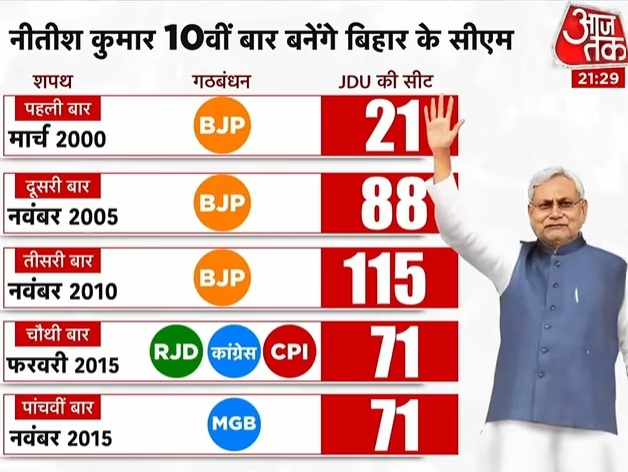
Source: aajtak
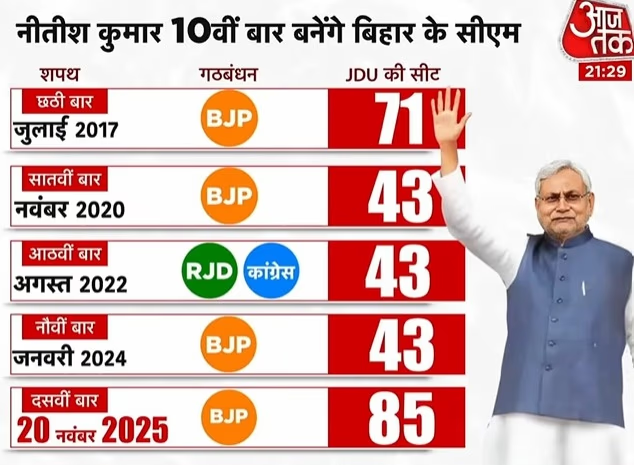
Source: aajtak
Number of Times as Chief Minister
In Tamil Nadu, Jayalalithaa served as CM six times, as did Himachal Pradesh's Virbhadra Singh. Sikkim's Pawan Kumar Chamling, Orissa's Naveen Patnaik, and West Bengal's Jyoti Basu each took the oath five times.
Once a poster bearer for others, Nitish Kumar is now Bihar's strongest political face. From the JP Movement to forming his own party, Nitish has met challenges head-on, reinventing himself at every turn.
Nitish Kumar's recent victory means Tejashwi Yadav will need to wait longer. However, this win wasn't handed to him; it's a tale of struggle and persistence.
Nitish Kumar was born in March 1951 in Bakhtiarpur, Bihar. As the youngest of four siblings, he was fondly called 'Munna' at home. His father, Ram Lakhan Singh, was an Ayurvedic doctor and a prominent Congress leader. His mother, Parmeshwari Devi, managed the home and farm. Scoring high marks in matriculation, Nitish's family sent him to Patna for electrical engineering studies.
Nitish Became College Student Union President in 1972
Nitish joined the United Students Front, which was structurally against the Congress, during his college days. Whether leading protests for bus services or other student concerns, the college recognized him as their leader. In 1972, he was elected president of the Bihar College of Engineering Students Union. Concluding his college years, his marriage to Manju Kumari Sinha from Nalanda was arranged, culminating on February 22, 1973.
After completing his studies, Nitish secured a trainee engineer job at the Electricity Board. However, driven by political passions, he left the job and joined the JP Movement. Upon release from jail, his electoral journey began. In 1977, the Janata Party granted 26-year-old Nitish a ticket from Harnaut in Nalanda, but he lost. Standing from the same seat in 1980, he lost again. By 1985, he vowed to quit contesting if defeated again.
Supported financially by his wife, Nitish won the election by a margin of 22,000 votes. In 1989, he won the Lok Sabha elections and moved to Delhi, while Lalu Yadav continued in Bihar. At this time, Congress ruled Bihar with Karpoori Thakur as the opposition leader. With Thakur's sudden demise in 1988, political dynamics positioned Lalu as the opposition leader. Nitish staunchly supported Lalu and in 1990 was a key voice in pushing for Lalu as Chief Minister in favor of VP Singh's preference, Ramsundar Das.
Nitish: Once Lalu Yadav's Right-Hand Man
The 1990 Bihar Assembly election saw the Janata Dal emerge victorious, and Lalu Prasad Yadav became Chief Minister. Back then, Nitish Kumar was considered Lalu's most trusted aide as his popularity surged in rural areas. However, allegations of corruption, casteism, and high-handedness tainted Lalu's governance. Disillusioned, Nitish drifted from Lalu, as their paths began to diverge.
By the 1995 Assembly elections, Nitish initiated his electoral strategies by forming a new party against Lalu. Alongside George Fernandes, he established the Samata Party, leveraging electoral rallies to expose Lalu's regime's administrative cracks. Yet, despite fielding his new party, Lalu's influence overshadowed them, returning with a strong mandate.
By 2000, many political analysts predicted Lalu's demise. Yet, where NDA secured 122 seats, the political landscape saw Nitish as a formidable force against Lalu. Despite forming a government, he resigned within seven days.
NDA's Majority Under Nitish in 2005
The 2004 general elections saw NDA with diminished seats, positioning Congress prominently. As RNJD joined the ruling coalition, Lalu Yadav became Railway Minister. Meanwhile, Bihar prepped for its assembly elections, eventually awarding NDA a majority under Nitish's leadership.
This new phase ushered in a breath of fresh air, dismantling 'Jungle Raj' for a promising future. 2010 saw elections focused on Nitish's gubernatorial achievements and governance, granting him robust support. This partnership presented JD(U) and BJP jointly as agents of growth.
Nitish Kumar Consistently Opposed Narendra Modi
As BJP mulled Narendra Modi's candidature, Nitish Kumar remained staunchly opposed, distancing himself from Modi, foretelling him as a harbinger of losses. Yet, political tides shifted, allowing him and Modi to form a historic coalition.
In 2009, while hopes of leadership within BJP still lingered with Advani, Modi's influence grew. By 2013, amid BJP's announcements in Goa, Kumar severed a 17-year alliance, steering towards an independent political journey—reinforced by Congress and CPI.
Though BJP walked out amidst claims against Kumar, 2014 polls saw grand successes, despite fierce competition. NDA secured a stronghold, though Kumar's JD(U) garnered only sparse victories.
Despite Efforts, Modi Ascends as Prime Minister
Despite his efforts, Kumar witnessed Modi's ascent, shouldering defeat responsibility as CM, handing leadership to Jitan Ram Manjhi. Soon, Nitish reclaimed the chief ministerial post, aligning with Lalu's support, symbolizing polarized coalition politics.
By 2015, elections revealed a rejuvenated RJD and JD(U) alliance, with Kumar as CM and Lalu's kin in supporting roles. Yet, corruption charges marred Lalu's family, straining ties and compelling fresh political negotiations with BJP by 2017.
Nitish Regains CMship Backed by BJP in 2017
Amid a swirling political climate, Kumar reclaimed the top spot, backed by NDA, marking his prolonged CM tenure. Opposition expectations shifted, soon observing political realignments back in favor of BJP by 2020. Kumar's consistent political command aligns Bihar's political chessboard uniquely within India's broader electoral landscape.
Despite momentary disputes, Nitish Kumar's political adaptability shapes a unique narrative throughout the state's ever-unfolding landscape.
